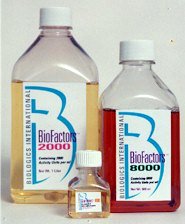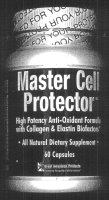TTAB Rejects Identification of Goods That Includes Another's Registered Trademark
The TTAB confirmed that an Applicant cannot include in its identification of goods a third-party's registered trademark. Applicant Great American's i.d. of goods for the mark MASTER CELL PROTECTOR included the registered trademark BIOFACTORS: "dietary supplement, namely, high potency anti-oxidant formula with collagen and elastin biofactors." The Board also affirmed a Section 2(b) refusal to register, finding the mark confusingly similar to the mark CELL PROTECTOR, registered for "food supplements in tablet, capsule, powder and liquid form." In re Great American Prods., Inc., Serial No. 76605638 (July 13, 2006) [not citable].

Great American argued that its identification of goods is acceptable because "there is no evidence that the public knows [BIOFACTORS] is a registered trademark," and because Applicant has "combined the meanings of "bio" and "factors" to make a generic term." The Board observed that Applicant's assertion that it "created" the word shows that BIOFACTORS is not a generic term. Furthermore, as a registered mark, BIOFACTORS is entitled to "all the presumptions provided by Section 7(b) of the Trademark Act," and cannot be attacked in this fashion: "... as long as BIOFACTORS is registered, applicant may not use it as a generic term in its identification. See Section 1402.09 of the Trademark Manual of Examining Procedure (4th ed., rev. April 2005)."
1402.09 Use of Marks Inappropriate in Identifications
If a trademark or a service mark that is registered to an entity other than the applicant is used in the identification of goods or services, the examining attorney should require that it be deleted and that generic wording be substituted. It is inappropriate to use a registered mark to identify a kind of product or a service, because such a mark indicates origin in only one party and cannot be used to define goods that originate in a party other than the registrant. Camloc Fastener Corp. v. Grant, 119 USPQ 264 (TTAB 1958). In place of the mark, a generic term must be used.
As to the Section 2(d) refusal to register, Great American argued that a dietary supplement is not a food supplement. The Board, however, found them to be "so closely related that they are virtually identical, and certainly extremely closely related." "Both products have the same purpose -- to supplement deficiencies in the diet," and the channels of trade are the same. Moreover, third-party registrations confirmed that these products may emanate from a single source and be sold under a single mark.

Turning to the marks, the board noted once again that when the involved goods are virtually identical, "the degree of similarity necessary to support a conclusion of likely confusion declines." In any case, here the marks are "virtually the same" and the addition of the word MASTER "does not serve to distinguish the marks."
Finally, Applicant seemed to assert that consumers of these products are careful in their purchasing. However, the Board observed that these products are rather inexpensive and may be recommended by word-of-mouth: "In such circumstances a consumer, who has been told of a food supplement called CELL PROTECTOR, and later sees MASTER CELL PROTECTOR dietary supplement on a store shelf, may believe that this is the product that had been recommended to him." "Under actual marketing conditions, consumers do not necessarily have the luxury of making side-by-side comparisons between marks, and must rely upon their imperfect recollections."
Consequently, the Board affirmed the Section 2(d) refusal.
TTABlog comment: On a regular basis, I check the PTO database for applications that include a certain client's famous trademark in their identifications of goods. It's easy to do with TESS. Let's say the mark is XYZ owned by ABC Corporation. Using the "Structured Form Search," I put "XYZ" in the first box, select ALL for the second box, select the connector "NOT," put "ABC" in the third box, and select "Owner Name" for the fourth box. When the results page appears, type "and live" in the "Refine Search" box at the top, hit return, and you then will get a list of applications and registrations owned by others, that include the mark XYZ in their identification of goods (or in their "descriptions of the mark," or as part of the marks themselves). [E.g., try IPOD-ALL-NOT-APPLE-Owner Name].
When an offending application appears, we call the Examining Attorney (as soon as one is assigned), point to TMEP Section 1402.09, and ask that the PTO require appropriate amendment. That has worked every time.
As to registrations that have already issued, we have been able persuade the few registrants to amend the registrations to substitute a generic term in place of the trademark.
Text Copyright John L. Welch 2006.




0 Comments:
Post a Comment
<< Home